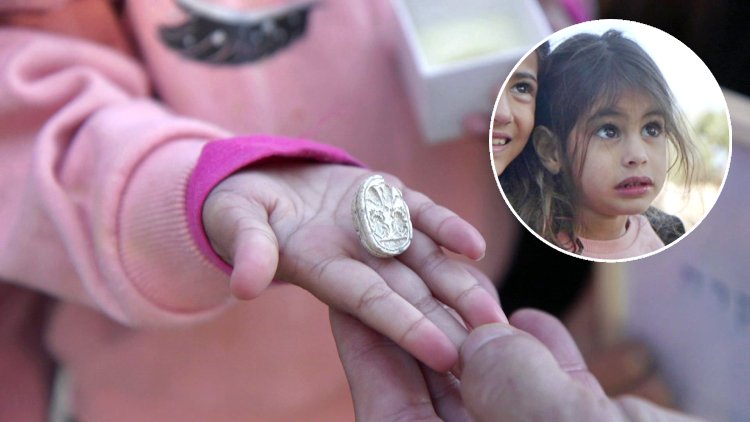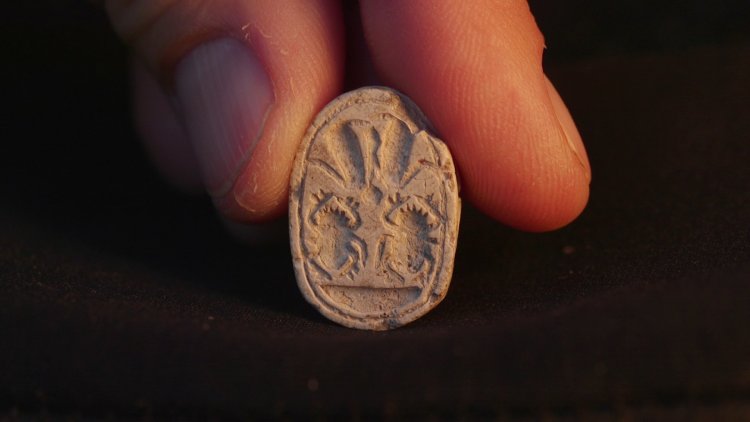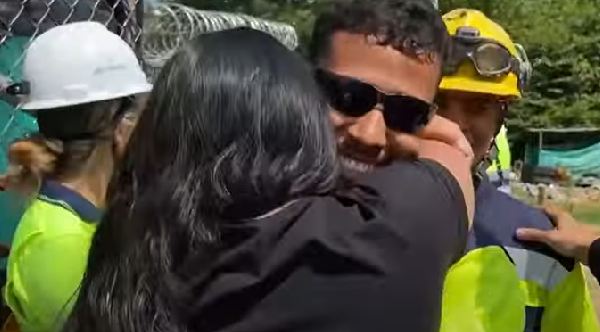Today’s positive news comes from Tel Azeka, Israel.
While out with her family near Beit Shemesh, 3.5-year-old Ziv Nitzan made an amazing discovery—an ancient Canaanite scarab amulet that dates back 3,800 years!

Photo by Emil Aladjem, Israel Antiquities Authority
Ziv and her family were exploring near Tel Azeka when she spotted what she thought was a pretty rock.
“She likes to pick up things from the ground,” her dad, Shahar, mentioned in a phone interview. “She always finds small things and takes them with her.”
Her sister Omer quickly realized it was something special.
“We were walking along the path, and then Ziv bent down – and out of all the stones around her, she picked up this particular stone,” recalled Omer Nitzan, Ziv’s sister. ” I called my parents to come see the beautiful stone, and we realized we had discovered an archaeological find!”
The family immediately contacted the Israel Antiquities Authority (IAA) to ensure the artifact would be preserved for historical research.
Experts later confirmed the object as a Middle Bronze Age scarab, a small, intricately carved seal used in ancient Canaan and Egypt. These scarabs, shaped like dung beetles, symbolized renewal and divine creation in Egyptian culture.

Photo by Emil Aladjem, Israel Antiquities Authority
“The scarab seals are tiny ornate objects, originating in ancient Egypt and designed in the shape of a dung beetle,” the IAA shared. “This beetle, considered sacred in the eyes of the ancient Egyptians, was a symbol of new life, because of the dung ball it created and then laid its eggs into it, from which new life would hatch. Its name in Egyptian derives from the verb ‘to come into being’, or ‘to be created’. This is because the Egyptians saw the scarab as a symbol of the incarnation of God the Creator.”
In honor of her incredible find, the IAA presented Ziv with a certificate of appreciation, and her discovery will be showcased at the Jay and Jeanie Schottenstein National Campus for the Archaeology of Israel during a special Passover exhibition.
According to IAA spokeswoman Yoli Schwartz, children stumble upon ancient artifacts a few times each year.
“Sometimes after the rain, the earth is rich with archaeological finds and things come up,” she stated.





